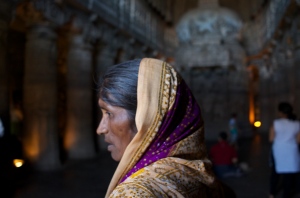Just for fun — I would like to share with you some pictures which may have witnessed the imagery we encountered this morning in class: 寶華承足 “having lotus supporting one’s feet” or “steping/moving on lotus”.
Sitting or standing with both feet on a single lotus is seen regularly from the earliest stage of Buddhist art, but this particular design with two feet respectively on two lotuses (or only one feet in a single lotus) may have been inspired by texts as we read today, I speculate…
A considerable number of such images can be found in early Dunhuang paintings, and later in Swat and Tibetan art. They seem to be pretty much bound with certain Bodhisattva figures: Avalokiteshvara is one of them, but Buddha also shared the feature.
Yet, considering the late dating (mostly half century later than Saddharmapundarika as far as I searched), this form simply can be a late visual rendering (maybe an innovation on the silk-road?). But anyway this is a nice one, in my view, as it captures skillfully the movement mentioned in the text.
(One of other occurences in the Chinese canon –《佛說羅摩伽經》T294/860c28: 寶花承足,步虛而來 — seems to spell out that these ratnapadmavikramin bodhisattvas are walking in a miraculous way. And Sanskrit evidence shows the crystalization of this figure into one bodhisattva entitled with this very name.)
I have been wondering if these feet-lotus imageries as a whole were created to be a visual counterpart of padakamala in the first place, and later artists reinvented such a karmadharaya analogy into something else, some other “compound”. There must be some research on the topic. If any of you happen to know any, I would be very happy to know.











